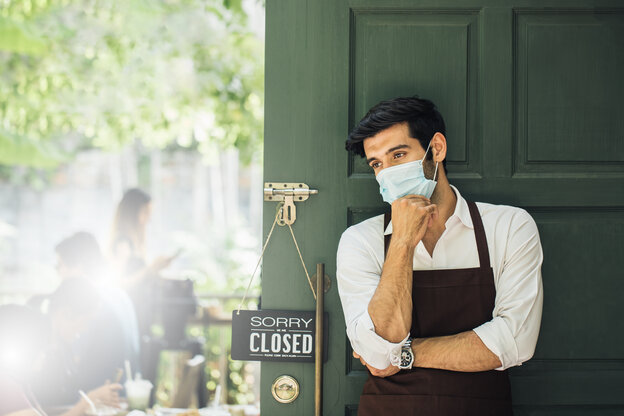
As coronavirus cases in the United States continue to wane, the lasting effects of the pandemic can be good news for certain sectors of the travel industry. Over the past 15 months, American travel behaviors have clearly changed—including where travelers stay during their overnight trips. In fact, at the beginning of May 2021, 15% of American travelers reported having stayed overnight in a vacation home rental within the past two years, while nearly a quarter of those who intend to travel in the next three months anticipate staying in a vacation home rental on an upcoming trip. To learn more about the remarkable rise in vacation rental usage, Senior Research Director Myha Gallagher interviewed a panel of executives from vacation rental companies during our May 25th industry update webinar.
Jason Sprenkle, CEO of Key Data, Michelle Hodges, President of SH Enterprises and Tim Cafferty, President of Outer Banks Blue, shared a look into the current landscape of vacation rentals.
You can watch the panel discussion in this video and read our key takeaways below.
Business for vacation rental companies has skyrocketed over the course of the pandemic. Michelle of SH Enterprises shared that they are “Having [their] best year in 10 years in terms of occupancy and ADR.” According to Jason of Key Data, RevPAR for property management companies is up 58% and occupancy rate is up 13% compared to pre-pandemic times in 2019. With these record-breaking metrics, Tim from Outer Banks Blue declared that “Right now it is our moment to shine. Now is our moment in the sun!”
The current success of vacation rental companies is attributed to safety and accessibility. With restrictions on certain types of travel, such as cruising and international travel, the preferred option was nearby regional leisure trips in which travelers stayed overnight in vacation rentals. The perception amongst many vacation rental clients was that certain types of travel introduce environments that can’t be controlled, such as at the airport or at a hotel. Vacation rentals, however, provide a safe environment where guests have control and peace-of-mind.
DMOs can best support vacation rental companies by providing one common message, such as “It’s Worth the Wait,” so that they can echo that same message. The panel suggested DMOs could help vacation rental companies most by communicating a common message that they and other travel-related businesses can use to attract visitors when they’re ready to travel. Gulf Shores & Orange Beach Tourism’s “Worth the Wait” summer marketing campaign is an excellent example, in which the DMO sets expectations and asks travelers to pack extra patience along with their swimsuits and sunscreens. Additionally, DMOs can also provide vacation rental companies with real-time data about visitors. Amidst the constantly evolving coronavirus situation, up to date information about visitors will help vacation rental companies anticipate the best ways to serve their valued clients.
As the travel industry continues to embark on the road to recovery and summer travel abounds, vacation rental companies are clearly having their moment in the sun.










